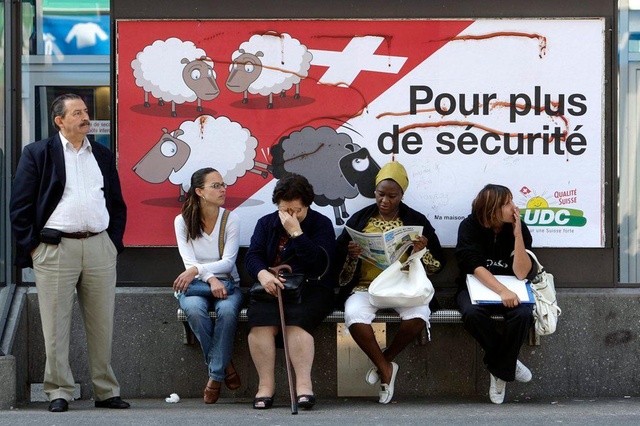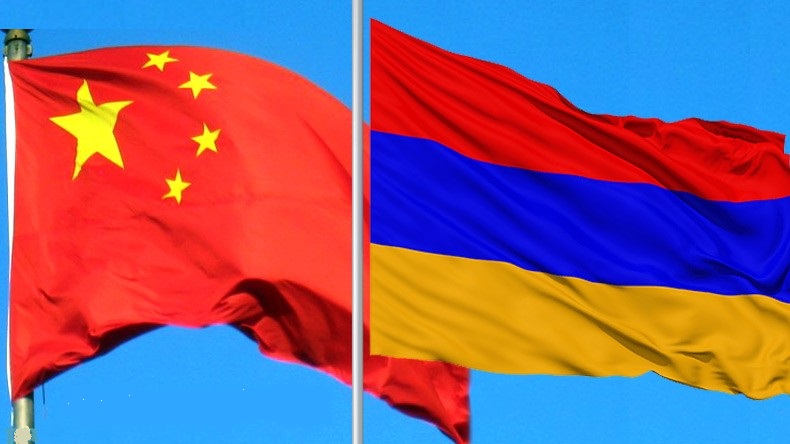
Introduction
A large number of scientific studies have been conducted on the increasing xenophobia in Western Europe since the 1990s. It should be remembered that 1990s witnessed several historic events that had the capacity to change the course of history. Among the key events of this hectic period, we can cite the following: end of the Cold War, the dissolution of Soviet Union and East Germany, the unification of the Germanies, the collapse of the Warsaw Pact, the Gulf War, the dissolution of Yugoslavia, the war in Bosnia-Herzegovina and Kosovo. This period brought about many traumatic social impacts. For instance, immigration movements to the Western Europe increased considerably.
Going back to the 19th century, millions of people migrated from Europe to European countries’ overseas colonies. Scholarly sources point out that “over the period 1846 to 1939, some 59 million people were to leave Europe, mostly heading for the Americas, but also for Australia, New Zealand and South Africa”.[1] This tide reversed in the 20th century, especially after the Second World War. In fact, the importing of African slaves into Europe had ceased at the end of the 18th century and few non-Europeans migrated to Europe. However, in the World Wars period, large numbers of non-Europeans soldiers and temporary laborers worked for the Allies, millions of Europeans, ex-Europeans, and their local allies from French North Africa, the British colonies in Southern Africa and South Asia, the Dutch East Indies, and Portuguese Africa moved to Europe during and after decolonization.[2]
The Second World War caused millions of deaths and led many people to settle in Europe during the redrawing period of national borders in the continent. The end of the war was followed by migration on a massive scale, as exiles, especially Germans, returned to their homelands. Western European economies were badly damaged and for economic revival, from 1960s on workers from other European countries were invited by the Western European countries as migrant or so-called guest workers.[3]
Coming to 1990s, a new category of migrants as refugees, asylum seekers, and illegal immigrants came into the scene. After the German unification, Germany became the epicenter of violent attacks against these new types of migrant communities. Serious attacks were staged by extreme right groups against refugee hostels, asylum seekers and other immigrant groups in Rostock-Lichtenhagen, Hoyerswerda, Frankfurt, and der Oder and Magdeburg in the eastern part of Germany. Arson attacks had also occurred in the West in Mölln and in Solingen.
On the night of 28-29 May 1993, four young German men belonging to the far-right group with neo-Nazi ties firebombed the house of a Turkish family in Solingen, resulting in the death of five people. Fourteen other family members were severely injured. The Solingen arson attack is considered as one of the most severe instances of violence in modern Germany.[4] These attacks were considered at the time as “xenophobic violence”. Since racism was legally and ethically condemned in the Western Europe, and understandably especially in Germany due to the crimes of the Nazi regime, the Western European public opinion for quite a while refrained from describing these incidents as “racist attacks” and preferred to label them as “xenophobic” incidents.
The close interrelationship and thin boundaries between racism and xenophobia have been neglected. For instance, the very recent mass murder and terrorist attack committed by the far-right sympathizer Tobias Rathjen in the German town of Hanau that took the lives of nine foreigners, including five people of Turkish descent living in Germany, was reflected in the media in the following manner: “Hanau shooting: Why Germany’s far-right AfD is blamed over racist violence”.[5] However, in contrast to its heading, the very first sentence of the said news piece is “The murder in Hanau of nine people of foreign heritage has shocked Germany and sparked heated debate about the root causes of far-right xenophobic violence.” (italic parts added by author) In fact, according to press reports, the Minister of Interior of the state Hesse of Germany, Peter Beuth, told reporters that initial police findings showed that the perpetrator was acting with “xenophobic motives”.[6] However, according to another news piece, German Chancellor “Angela Merkel has said the murder of nine people in a shooting rampage by a suspected rightwing extremist has revealed the ‘poison’ of racism and hate in Germany”.[7]
As it can be seen from this example, there is a continuing intrinsic tendency in certain sections of the Western European countries to hide the overt “racist intentions” behind the more milder-sounding “xenophobic motives.” This situation, in fact, makes it necessary to academically examine the close relationship between racism and xenophobia, and how racism has made a room for itself in the concept of xenophobia by mutation over time.
The Reality Of Xenophobia And Racism In Switzerland
According to press reports back in 2015, an in-depth study of racist and xenophobic attitudes in Switzerland conducted between 2010 and 2014 through a series of face-to-face interviews revealed that one in four people had negative opinions of foreigners in general, and one in five is hostile to Muslims and one in ten is anti-Semitic.[8] However, the overall trend of xenophobia showed a decline, from 30% harboring negative opinions towards foreigners in 2010 to 24% in 2014. These were respondents who, for example, favored a restrictive naturalization policy and perceived foreigners as social welfare cheats. Per the said press report,
“Attitudes towards foreigners and other groups were measured in a variety of ways, such as how people felt about their neighbors, how freely they expressed their opinions in public, how they felt in the presence of ‘others’ and what stereotypes or negative views they agreed with. When it came to ‘being bothered’ by the presence of people of other skin colors, religions, nationalities or languages in public, only 6% of respondents went this far.”
It is worth mentioning that the most striking results of the survey concerns the Muslims. In this context, it is stressed in the aforesaid report that:
“The most dynamic results by far related to Muslims. The survey first measured anti-Muslim sentiment in the aftermath of a 2009 national vote to ban the construction of minarets. At that time (April 2010) 45% of respondents admitted to subscribing to negative stereotypes of Muslims. This had dropped to 19% four years later when the final survey was conducted. But that was just a measure of perceived stereotypes. Over the same period, in a straight measure of negative attitudes towards Muslims, the proportion of people who expressed those ideas and feelings increased from 13% to 18%.”
As far as anti-Semitism is concerned, one in ten people admitted to having negative opinions about Jews in each of the three survey of 2010, 2012, and 2014.
More recent data on discriminatory attitudes toward foreigners and immigrants was published in October 2017 by the Service for Combating Racism of Swiss Federal Department of Home Affairs. The report entitled “Racial discrimination in Switzerland 2016 report of the Service for Combating Racism” suggests that;
“Racism is seen as a serious social problem, and 34% of those questioned believe that more should be done to fight it… 21% of those surveyed are made uneasy in their everyday lives by the presence of people with an itinerant lifestyle, 12% by people who speak a different language, 10% by people with a different religion and 6% by people of a different colour or nationality… Of those respondents who stated that the presence of the above groups made them feel uncomfortable, 28% claimed they experienced this discomfort at work and 19% in the neighborhood where they live. However, if the language factor is left aside, the figures for everyday life, work and neighborhood are the same at roughly 14%”.[9]
The report states the following;
“The results of the… survey lead to the conclusion that attitudes towards foreigners are just as ambivalent in Switzerland as in other countries… Negative attitudes mainly appear to be directed towards potential immigrants who have not yet arrived in Switzerland.”
In summary, the above-mentioned report puts Switzerland in the same basket with Western European countries as regards to racism, xenophobia, and general negative attitude toward immigrants.
ECRI Report on Switzerland
The European Commission against Racism and Intolerance (ECRI), established by the Council of Europe, is an independent human rights monitoring body specialized in questions relating to the fight against racism, discrimination (on grounds of “race”, ethnic/national origin, colour, citizenship, religion, language, sexual orientation and gender identity), xenophobia, antisemitism and intolerance. It is composed of independent and impartial members appointed on the basis of their moral authority and recognized expertise in dealing with racism, xenophobia, antisemitism and intolerance. In the framework of its statutory activities, ECRI conducts country monitoring work, which analyses the situation in each of the member States of the Council of Europe regarding racism and intolerance and draws up suggestions and proposals for dealing with the problems identified. ECRI’s country monitoring deals with all member States on an equal footing. The work takes place in five-year cycles. The sixth cycle country reports focus on three topics common to all member States: (1) Effective equality and access to rights, (2) Hate speech and hate-motivated violence, and (3) Integration and inclusion, as well as a number of topics specific to each one of them.
The sixth monitoring cycle report of ECRI on Switzerland was adopted on 10 December 2019 and published on 19 March 2020 by Council of Europe.
The ECRI report, first and foremost, gives credit to the Federal Commission against Racism of Switzerland and praises its maintenance of an impressive and useful database on racist hate speech and crime. The report also lists numerous positive developments in Switzerland
The report, however, also draws attention to some issues that give rise to concern. The most striking concern mentioned in the report is the “institutional and structural racism”. In this respect, the report states the following:
“Institutional and structural racism continues to be a problem in the police, manifested in racial profiling and identity checks targeting notably persons with itinerant ways of life and Black persons. A number of police activities have ended in the death of Black persons”.[10]
As to the “institutional and structural racism”, ECRI recommends the following;
“further training for the police on the issue of racial profiling and on the use of the reasonable suspicion standard. It also strongly recommends setting up a body independent of the police and prosecution authorities, entrusted with the investigation of alleged cases of racial discrimination”.[11]
Data In ECRI Report Concerning Hate Speech In Switzerland
ECRI report, in paragraph 32, draws attention to a sharp rise in intolerant discourse against Muslims particularly in the media. It is mentioned in this context that a study entitled “Notes on experienced, but barely registered hate crime” showed that 85% of Muslim respondents experienced the representation of Islam in the media as rather or very negative. Further, 88% were particularly clear on the responsibility of the media for the deteriorated attitude of non-Muslims towards Muslims. The report notes in paragraph 33 that “Muslim women wearing visible religious symbols are particularly vulnerable to hate speech due to the intersectionality of gender and religion, leading to isolation and hindering the building of inclusive societies”.[12]
As per the hate crime statistics, the Report states in paragraph 28 the following:
“Another official source of data is gathered by the Network of Counselling Centres for Victims or Racism, which recorded 301 racist incidents in 2017. Incidents are recorded in the following categories: acts of violence, communication (such as threats, insults, gestures), exclusion (including unequal or denigrating treatment, harassment, racial profiling) and extreme-right propaganda. The most frequent type of racist incident involved xenophobia (112 incidents), followed by anti-Black racism (95 incidents), hostility towards Muslims (54) and anti-Arab racism (36). Three incidents involved hostility towards Yenish, Sinti/Manouch and Roma, and three involved multiple discrimination including sexual orientation or gender identity. 223 incidents fell under the communication category, of which 93 were insults, 20 threats and 44 other disturbing claims or illustrations. In total, of those victims who communicated their sex, 126 were men and 119 were women”.[13]
Conclusion
The above-mentioned points indicate that Switzerland is also getting its share from rising racism and xenophobia that is becoming more and more common in Western Europe. As in other Western European countries, the phenomenon of immigration appears to play an important role in the rise of racism and xenophobia in Switzerland.
Unlike many other Western European countries, Switzerland has not been a colonialist country. Therefore, she did not have a labor force from former colonies. However, she pursued a policy of large-scale labor import from 1945 to 1974 and foreign workers were recruited abroad by employers.[14] In this regard, Switzerland can be considered experienced in settlement and the formation of migrant communities. Another point that should be mentioned is that, Switzerland allows free movement of people from the European Union (EU) and members of the European Free Trade Association (EFTA) -Iceland, Liechtenstein, and Norway- in return for enhanced access to the EU’s single market. However, according to press reports, Swiss “far-right activists complain this has swamped Switzerland with foreigners who now make up a quarter of the population”.[15] It seems that the issue is still on the Swiss political agenda.[16]
All these point to us that there is an influential anti-immigrant base within Swiss society that is prone to racism and xenophobia. Unfortunately, this is an ugly reality not only for Switzerland but most of the other Western European countries. It is time to face this reality in a sincere manner.
Just as contemporary novel Coronovirus (SARS-CoV-2) pandemic is sought to be quarantined these days, racism and contemporary xenophobia must be also seriously quarantined without wasting time in Western Europe. It should be noted that the loss of time facilitates the spread of this lethal social virus and increases the damage it brings upon Europe.
*Photo: https://www.swissinfo.ch/
[1] Peter Stalker, Global Nations: The Impact of Globalization on International Migration (Publications of the International Labour Office, 1997), 3.
[2] Pieter C. Emmer and Leo Lucassen, “Migration from the Colonies to Western Europe since 1800,” European History Online (Mainz: Leibniz Institute of European History, November 13, 2012), http://www.ieg-ego.eu/emmerp-lucassenl-2012-en URN: urn:nbn:de:0159-2012111308
[3] Bülent Kaya, The Changing Face of Europe – Population Flows in the 20th Century, trans. Margaret Campbell and Christopher Reynolds, Learning and Teaching about the History of Europe in the 20th Century (Strasbourg: Council of Europe Publishing, 2002), 19–20, https://rm.coe.int/1680494249
[4] Teoman Ertuğrul Tulun, “Remembering Solingen: The Fractious Rise of Extreme Xenophobia in Western Europe,” Hürriyet Daily News, May 19, 2018.
[5] Damien McGuinness, “Hanau Shooting: Why Germany’s Far-Right AfD Is Blamed over Racist Violence,” BBC News, Fwebruary 2020, sec. Europe, https://www.bbc.com/news/world-europe-51588602
[6] Gozde Bayar and Ayhan Simsek, “Germany: 5 Turkish Nationals among Victims of Mass Shooting,” Anadolu News Agency, February 20, 2020, sec. Europe, https://www.aa.com.tr/en/europe/germany-5-turkish-nationals-among-victims-of-mass-shooting/1739687#
[7] Kate Connolly and Philip Oltermann, “Hanau Attack Reveals ‘poison’ of Racism in Germany, Says Merkel,” The Guardian, February 20, 2020, sec. Europe, https://www.theguardian.com/world/2020/feb/20/hanau-attack-reveals-poison-of-racism-in-germany-says-merkel
[8] Clare O’Dea, “One in Four Swiss Residents Has Xenophobic Attitudes,” Swiss.Info (blog), February 13, 2015, https://www.swissinfo.ch/eng/racism_one-in-four-swiss-residents-has-xenophobic-attitudes/41271694
[9] “Racial Discrimination in Switzerland 2016 Report of the Service for Combating Racism” (Federal Department of Home Affairs, October 2017), 16–17, https://www.edi.admin.ch/dam/edi/en/dokumente/FRB/Neue%20Website%20FRB/Monitoring%20und%20Berichterstattung/Bericht/EN_BERICHT%20FRB%202016.pdf.download.pdf/EN_BERICHT%20FRB%202016.pdf
[10] “ECRI Report On Switzerland” (Council of Europe, March 19, 2020), 7, https://rm.coe.int/ecri-report-on-switzerland-sixth-monitoring-cycle-/16809ce4bd
[11] “ECRI Report On Switzerland,” 30.
[12] “ECRI Report On Switzerland,” 16.
[13] “ECRI Report On Switzerland,” 14.
[14] Stephen Castles, The Age of Migration International Population Movements in the Modern World, 2nd ed. (Macmillan International, 1998), 70.
[15] Michael Shields, review of Swiss immigration rises again as ties with EU face test, by Angus MacSwan, Reuters, February 15, 2019, sec. World News, https://www.reuters.com/article/us-swiss-eu/swiss-immigration-rises-again-as-ties-with-eu-face-test-idUSKCN1Q410T
[16] “Swiss to Vote Again on EU Migrant Curbs,” Euractiv, January 16, 2020, sec. Justice & Home Affairs, https://www.euractiv.com/section/justice-home-affairs/news/swiss-to-vote-again-on-eu-migrant-curbs/
© 2009-2025 Center for Eurasian Studies (AVİM) All Rights Reserved
No comments yet.
-
 SYRIAN REFUGEE ISSUE: EU INSENSITIVITY VERSUS UK REALISM
SYRIAN REFUGEE ISSUE: EU INSENSITIVITY VERSUS UK REALISM
Teoman Ertuğrul TULUN 31.03.2020 -
 THE DURABILITY OF SILK IN MOUNTAINS OF CAUCASUS: CHINA AND ARMENIA
THE DURABILITY OF SILK IN MOUNTAINS OF CAUCASUS: CHINA AND ARMENIA
Teoman Ertuğrul TULUN 13.09.2017 -
 THE RISING STRATEGIC IMPORTANCE OF TÜRKIYE'S MIDDLE CORRIDOR IN EURASIA AMID THE UKRAINE CONFLICT
THE RISING STRATEGIC IMPORTANCE OF TÜRKIYE'S MIDDLE CORRIDOR IN EURASIA AMID THE UKRAINE CONFLICT
Teoman Ertuğrul TULUN 29.05.2024 -
 STIMULUS ACTIONS ARE NEEDED FOR NEW ARMS CONTROL AND DISARMAMENT MINDSET IN EURASIA
STIMULUS ACTIONS ARE NEEDED FOR NEW ARMS CONTROL AND DISARMAMENT MINDSET IN EURASIA
Teoman Ertuğrul TULUN 11.11.2019 -
 PEACE TREATY OF LAUSANNE AND THE END TO ARMENIAN ASPIRATIONS
PEACE TREATY OF LAUSANNE AND THE END TO ARMENIAN ASPIRATIONS
Teoman Ertuğrul TULUN 22.07.2016
-
 DEVELOPMENTS IN LINE WITH TÜRKİYE’S GOAL OF BECOMING A REGIONAL ENERGY HUB
DEVELOPMENTS IN LINE WITH TÜRKİYE’S GOAL OF BECOMING A REGIONAL ENERGY HUB
Bekir Caner ŞAFAK 24.02.2025 -
 REMEMBERING AND REMINDING THE SIGNIFICANCE, MEANING, AND PROVISIONS OF THE LAUSANNE PEACE TREATY IN ITS CENTENARY
REMEMBERING AND REMINDING THE SIGNIFICANCE, MEANING, AND PROVISIONS OF THE LAUSANNE PEACE TREATY IN ITS CENTENARY
Teoman Ertuğrul TULUN 11.05.2023 -
 ARAKAN AND THE PLIGHT OF THE ROHINGYA: CONFLICT UNDER AN UMBRELLA OF DEFINITIONS
ARAKAN AND THE PLIGHT OF THE ROHINGYA: CONFLICT UNDER AN UMBRELLA OF DEFINITIONS
Teoman Ertuğrul TULUN 09.10.2017 -
 THE MOLDOVA ELECTIONS AND GAGAUZIA AS A POLITICAL REFLECTION OF THE RUSSIA-EU RIVALRY
THE MOLDOVA ELECTIONS AND GAGAUZIA AS A POLITICAL REFLECTION OF THE RUSSIA-EU RIVALRY
Bekir Caner ŞAFAK 26.12.2025 -
 ANZAC DAY: “THERE IS NO DIFFERENCE BETWEEN THE JOHNNIES AND THE MEHMETS TO US WHERE THEY LIE SIDE BY SIDE” AT GALLIPOLI. IS THIS THE CASE FOR OTHER COUNTRIES?
ANZAC DAY: “THERE IS NO DIFFERENCE BETWEEN THE JOHNNIES AND THE MEHMETS TO US WHERE THEY LIE SIDE BY SIDE” AT GALLIPOLI. IS THIS THE CASE FOR OTHER COUNTRIES?
Teoman Ertuğrul TULUN 30.04.2019
-
25.01.2016
THE ARMENIAN QUESTION - BASIC KNOWLEDGE AND DOCUMENTATION -
12.06.2024
THE TRUTH WILL OUT -
27.03.2023
RADİKAL ERMENİ UNSURLARCA GERÇEKLEŞTİRİLEN MEZALİMLER VE VANDALİZM -
17.03.2023
PATRIOTISM PERVERTED -
23.02.2023
MEN ARE LIKE THAT -
03.02.2023
BAKÜ-TİFLİS-CEYHAN BORU HATTININ YAŞANAN TARİHİ -
16.12.2022
INTERNATIONAL SCHOLARS ON THE EVENTS OF 1915 -
07.12.2022
FAKE PHOTOS AND THE ARMENIAN PROPAGANDA -
07.12.2022
ERMENİ PROPAGANDASI VE SAHTE RESİMLER -
01.01.2022
A Letter From Japan - Strategically Mum: The Silence of the Armenians -
01.01.2022
Japonya'dan Bir Mektup - Stratejik Suskunluk: Ermenilerin Sessizliği -
03.06.2020
Anastas Mikoyan: Confessions of an Armenian Bolshevik -
08.04.2020
Sovyet Sonrası Ukrayna’da Devlet, Toplum ve Siyaset - Değişen Dinamikler, Dönüşen Kimlikler -
12.06.2018
Ermeni Sorunuyla İlgili İngiliz Belgeleri (1912-1923) - British Documents on Armenian Question (1912-1923) -
02.12.2016
Turkish-Russian Academics: A Historical Study on the Caucasus -
01.07.2016
Gürcistan'daki Müslüman Topluluklar: Azınlık Hakları, Kimlik, Siyaset -
10.03.2016
Armenian Diaspora: Diaspora, State and the Imagination of the Republic of Armenia -
24.01.2016
ERMENİ SORUNU - TEMEL BİLGİ VE BELGELER (2. BASKI)
-
AVİM Conference Hall 24.01.2023
CONFERENCE TITLED “HUNGARY’S PERSPECTIVES ON THE TURKIC WORLD"









